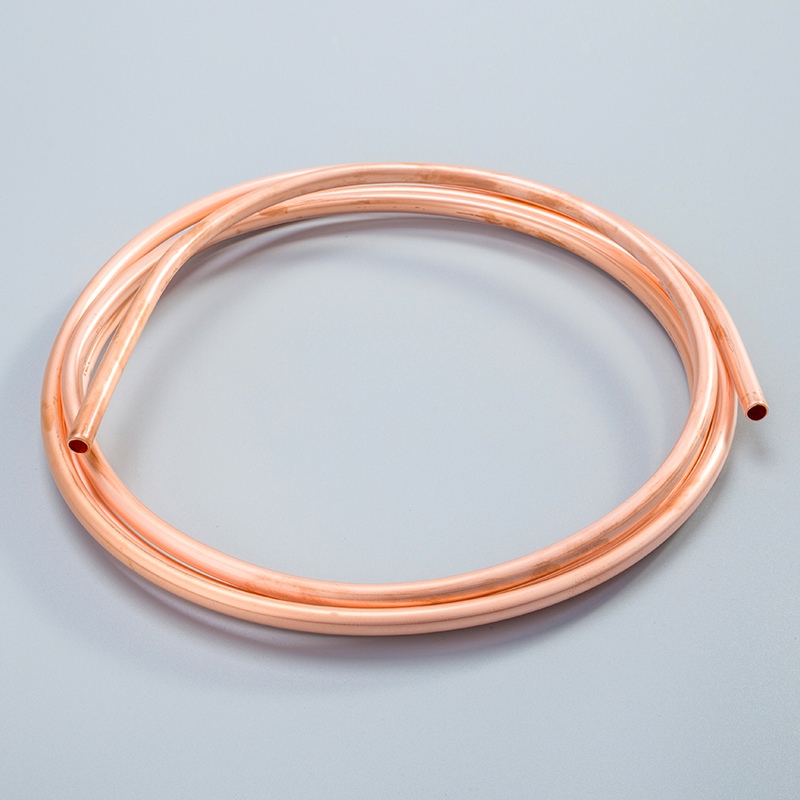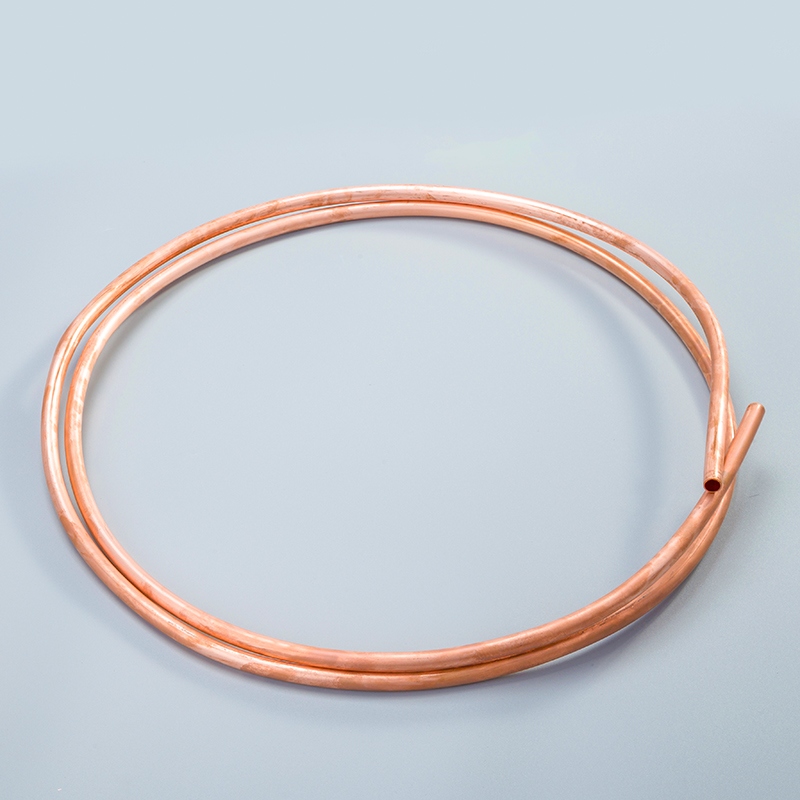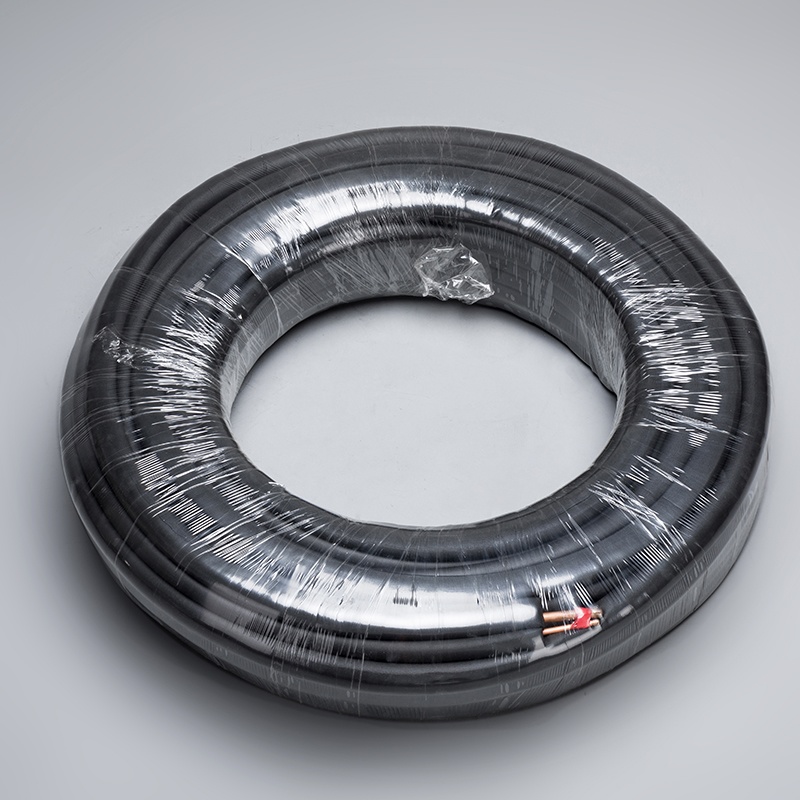How to Ensure Quality Control for Twin Copper Pipes

How to Ensure Quality Control for 1/4 and 3/8 Twin Copper Pipes
Quality control plays a pivotal role in the meticulous oversight of 1/4 and 3/8 twin copper pipes from production to installation. These pipes, renowned for their versatility, find applications in various systems like HVAC and plumbing. This blog aims to serve as a definitive manual on maintaining stringent quality standards for 1/4 and 3/8 twin copper pipes, ensuring durability and efficiency throughout their lifecycle.
Understanding Twin Copper Pipes

Types of Twin Copper Pipes
Soft Copper Pipes
Manufacturers prioritize compliance with industry standards and focus on refrigeration quality to deliver high-quality 1/4 and 3/8 twin copper pipe coils that meet the highest quality requirements across different industries.
Quality assurance methods such as visual inspection and non-destructive testing are rigorously implemented to maintain the integrity of the coils.
Hard Copper Pipes
Quality assurance plays a pivotal role in ensuring the effectiveness of 1/4 and 3/8 twin copper pipe coils.
These coils are essential components in various applications, ranging from plumbing to refrigeration.
Adhering to industry standards is essential for guaranteeing the reliability and safety of copper pipe coils in various applications.
Applications of Twin Copper Pipes
HVAC Systems
Understanding the significance of maintaining high standards in copper pipe coil production is crucial for both manufacturers and consumers.
Plumbing Systems
Quality assurance methods such as visual inspection and non-destructive testing are rigorously implemented to maintain the integrity of the coils.
Refrigeration Systems
Adhering to industry standards is essential for guaranteeing the reliability and safety of copper pipe coils in various applications.
Quality Control Standards and Regulations
Industry Standards
ASTM Standards
ASTM Standards are crucial guidelines that ensure the quality and performance of 1/4 and 3/8 twin copper pipes. These standards outline specific requirements for materials, design, and construction to guarantee optimal performance in various applications. Manufacturers adhere to these standards meticulously to maintain the integrity and reliability of the copper pipe coils.
ISO Standards
ISO Standards, another essential set of regulations, play a significant role in regulating the installation and maintenance of plumbing systems where 1/4 and 3/8 twin copper pipes are utilized. These standards cover aspects such as material compatibility, pressure ratings, and leak prevention measures to ensure the safe operation of plumbing systems. Adhering to ISO Standards is paramount for manufacturers to deliver high-quality products that meet industry requirements effectively.
Quality Control Processes
Material Inspection
Raw Material Quality
Evaluating the raw material quality is a critical aspect of quality control for copper pipes. Manufacturers must ensure that the materials used meet specified standards to guarantee the durability and performance of the final product.
Conducting thorough inspections on raw materials helps identify any potential defects or inconsistencies early in the production process, minimizing risks of substandard products reaching consumers.
Implementing stringent quality checks at this stage contributes significantly to the overall reliability and safety of 1/4 and 3/8 twin copper pipes.
Supplier Verification
Verifying suppliers' credentials and adherence to industry regulations is paramount in maintaining high quality control standards for copper pipes. Reliable suppliers play a crucial role in ensuring consistent quality across batches of raw materials.
Establishing strong partnerships with reputable suppliers fosters trust and reliability in the supply chain, ultimately reflecting positively on the end product's quality.
Regular audits and assessments of suppliers' processes help manufacturers uphold stringent quality control measures throughout the production cycle.
Manufacturing Process Control
Precision in Pipe Dimensions
Achieving precision in pipe dimensions is essential for meeting industry standards and ensuring optimal performance of copper pipes. Manufacturers employ advanced technologies and precise machining techniques to maintain dimensional accuracy.
Consistent monitoring of manufacturing processes, including cutting, shaping, and finishing, is vital to producing copper pipes with uniform dimensions that meet customer expectations.
Adhering to strict tolerances during production enhances the overall quality and functionality of 1/4 and 3/8 twin copper pipes, contributing to their longevity and performance.
Welding and Joining Techniques
Employing appropriate welding and joining techniques is crucial in maintaining structural integrity and leak-free connections in copper pipes. Skilled welders follow established procedures to create strong bonds between pipe segments.
Ensuring proper alignment, heat control, and joint reinforcement during welding minimizes the risk of defects or weak points that could compromise the pipe's integrity.
Regular training programs for personnel involved in welding operations help uphold high standards of workmanship and reinforce quality control practices within manufacturing facilities.
Testing and Validation
Pressure Testing
Conducting rigorous pressure tests on finished copper pipes is a fundamental step in validating their strength and leak resistance. Exposing pipes to varying pressure levels simulates real-world conditions to assess their performance under stress.
Accurate pressure testing procedures help identify any weaknesses or vulnerabilities in the pipe structure before they are installed, preventing potential failures down the line.
Documenting pressure test results systematically provides valuable data for quality assurance reports, demonstrating compliance with industry standards for 1/4 and 3/8 twin copper pipes.
Leak Detection
Implementing advanced leak detection methods ensures that copper pipes maintain their integrity over time by identifying any leaks or imperfections early on. Utilizing sensitive equipment allows technicians to pinpoint even minor leaks accurately.
Regular leak detection protocols as part of routine maintenance activities help prevent costly repairs or system downtime due to undetected leaks in piping systems.
Swift response to detected leaks through prompt repairs or replacements showcases a commitment to maintaining high quality control standards throughout the lifespan of copper pipes.
Visual Inspection
Visual inspection remains a cornerstone of quality control, enabling inspectors to visually assess surface conditions, welds, joints, and overall workmanship on copper pipes. Inspectors look for signs of corrosion, physical damage, or irregularities that may affect performance.
Incorporating automated visual inspection technologies enhances inspection efficiency by detecting minute defects that may escape human observation. Combining manual inspections with automated systems ensures comprehensive evaluation of 1/4 and 3/8 twin copper pipes.
Best Practices for Installation

Proper Handling and Storage
Avoiding Physical Damage
Store copper pipes in a dry, well-ventilated area to prevent corrosion.
Use protective covers or padding during transportation to avoid dents or scratches.
Handle pipes with care to prevent bending or distortion that may affect their performance.
Preventing Contamination
Keep pipes away from direct contact with chemicals or solvents that could degrade the material.
Use clean gloves when handling copper pipes to avoid oil or dirt transfer.
Inspect storage areas regularly to ensure cleanliness and proper conditions for pipe preservation.
Installation Techniques
Correct Pipe Bending
Utilize specialized tools like tube benders to achieve precise bends without kinking the pipe.
Follow manufacturer guidelines for bending radius and angles to maintain pipe integrity.
Verify the straightness of pipes before installation to prevent issues during bending processes.
Secure Fittings and Connections
Use appropriate fittings and connectors compatible with copper pipes for leak-free joints.
Apply sealants or tapes as needed to ensure tight seals at connection points.
Conduct pressure tests after fitting installations to confirm system integrity and leak resistance.
Post-Installation Inspection
Ensuring System Integrity
Perform visual inspections of installed pipes to check for signs of damage or misalignment.
Conduct pressure tests on the entire system to verify performance under operating conditions.
Address any identified issues promptly to maintain system efficiency and reliability.
Final Quality Checks
Document all installation steps and quality control measures taken during the process.
Review installation records for compliance with industry standards and regulations.
Engage in regular maintenance checks post-installation to uphold long-term system functionality and safety standards.
By adhering to these best practices, professionals can ensure the proper handling, installation, and inspection of twin copper pipes, promoting longevity, efficiency, and safety in various applications within HVAC, plumbing, and refrigeration systems.
Summarize the critical aspects of maintaining quality control for twin copper pipes.
Highlight the necessity of strict adherence to established standards and recommended practices.
Advocate for the thorough implementation of quality control procedures to ensure dependability and safety in operations.
Conclude with a reflection on the advantages of upholding superior quality standards within the industry.
See Also
Innovative Approaches for Ensuring Quality in Copper Pipe Coils
Revealing Quality Assurance Strategies for Copper Pipe Coils
Key Safety Measures for Twin Copper Pipe Installation


